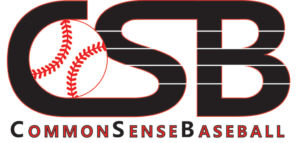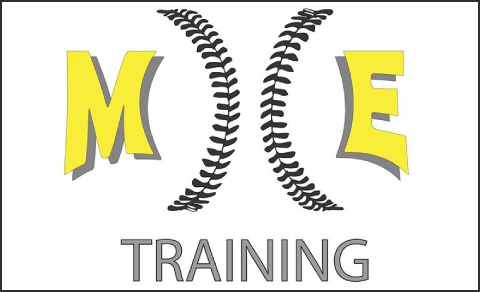https://www.youtube.com/watch?v=m5yVp_42nMk
by Jarad Vollkommer, Bs(c), CSCS
Has anyone ever told you to be careful with your Creatine supplementation because it damages your kidneys? Or, that it really has no effect on muscle growth and is clinically unsafe? These are some of the common misconceptions in the field of exercise science. Fortunately for you, this article is giving you the real science behind Creatine.
Creatine has been the most widely studied supplement since the 1990s. Its importance to muscle growth is well known, and has been backed by numerous scientific studies.
In this article, we will review how Creatine is used by your cells, why it is important for baseball, and how it feeds your muscles to grow!
 The Current Status Quo
The Current Status Quo
The International Society of Sports Nutrition states, Creatine monohydrate is the most effective ergogenic nutritional supplement currently available to athletes in terms of increasing high-intensity exercise capacity and lean body mass during training [1].
This seems to be a very bold statement, but the amount of research done on the effects of Creatine supplementation and muscle growth all seem to reach the same end, as well as debunking all of the current myths:
- All weight gain is ONLY from water retention
- Creatine damages your kidneys
- Creatine causes excessive cramping and dehydration
- We are not aware of the long-term effects
Previous research has confirmed that Creatine supplementation has no negative side effects on the kidneys and that weight gain is not just from water retention alone.[2,3].

To become a Black Diamond call 631-942-2542
So What is Creatine?
Creatine can be found in meats and fish. However, these items must be consumed in large portions to obtain a generous amount of Creatine. For this reason, Creatine supplementation is much easier, inexpensive, and more efficient to get you to your muscle-building goals during the off-season [1].
Creatine, which is naturally produced by the human body in the liver and pancreas, aids in replenishing our cells with ATP: the primary source of energy. As our natural phosphocreatine stores are depleted through high-intensity exercise, the ability to maintain this high-intensity decreases significantly [1].
Being that baseball is a sport of multiple, high-intensity bursts of movement, having an understanding on what Creatine is, and how it works, will put you ahead of other competitors.
In theory, by simply adding Creatine supplementation into your training regimen, our cells will have more phosphocreatine readily available in the blood stream so that it can be used for energy. In brief, phosphocreatine (PCr) donates an inorganic phosphate group to ADP to generate an ATP molecule (in case you were just so curious!).
If our cells have more energy supplied to them, then wouldnt we be able to sustain this high-intensity work for a prolonged amount of time? The answer is yes! [1].
About 95% of the bodys Creatine is stored within skeletal muscle as phosphocreatine. However, our body can only store about 1.7 g/kg of bodyweight, but can store up to 160 grams [1].
 Supplementation
Supplementation
The most common form of Creatine that is taken as a supplement is Creatine Monohydrate (CM), although there are a ton of other Creatine supplements out on the market [1].
I dont mean to overwhelm the reader with the different types of Creatine. Lets just stick to Creatine Monohydrate, since it is widely used and researched.
In a study done on female collegiate swimmers, taking 2g of Creatine a day did not show any performance or body composition benefits over a 6-week period [4]. Hence, it is important to take a dose of Creatine based on a proportion of body weight (g/kg).
Creatine supplementation may be confusing because of the different phases of ingestion (loading and cycling), and there are a few out there who define these phases differently.
Simply put, the loading phase involves the ingestion of 0.3g/kg/day of Creatine Monohydrate for 5-7 days and 3-5 g/day once that is completed. For example, if you weigh 160 pounds (72.7kg), you would be taking 21.8g/day. This specific suggestion has shown to increase muscle Creatine stores by 10-40% [1].
If you supplement Creatine with protein and carbohydrates, you may see even greater results. Research suggests that loading (0.3g/kg/day) with the ingestion or protein and carbohydrates, the loading phase may only need to last for 2-3 days [1].
The cycling phase of Creatine supplementation involves the steady buildup of muscle Creatine stores, or consuming loading doses for 3-5 days every 3-4 weeks. Some research supports the cycling phase without any loading, and that you could see an increase in muscle size and strength when taking 6g/day for 12 weeks [1].
Pairing CM with other supplements has also shown to have additional effects. The best pair at improving lean body mass and strength seems to be CM and beta-hydroxy-beta-methylbutyrate (HMB) [1].
However, as previously mentioned, adding CM with carbohydrates and/or protein can create synergistic effects on muscle Creatine retention, muscle growth, and muscle strength as well [1]!
 You Said Muscle Growth, Right?
You Said Muscle Growth, Right?
Previous research supports that Creatine supplementation, in unison with a sound resistance training program, can increase fat-free mass and strength in both men and women [1].
Even when muscle mass is low or damaged, Creatine supplementation has shown to increase muscle mass in patients with broken bones [1].
Remember, a key attribute in offseason training is increasing muscle mass (also known as part of fat-free mass).
Dr. Jeff Volek and others conducted an experiment looking at the effects of Creatine supplementation on muscle growth and strength. In this study, subjects were given either Creatine or a placebo pill for the duration of a 12-week resistance training program. The researchers found that the Creatine group saw double the amount of fat-free mass gained in comparison to the placebo group (6.3% and 3.1%, respectively) [6].
Not only did the Creatine participants see an increase in just fat-free mass, they saw an increase in muscle fiber cross-sectional area! This is a very important adaptation as it relates to muscle growth and strength.
While the total amount of muscle Creatine was elevated in the Creatine group, these individuals were also able to perform a higher amount of volume and maintain their power output in each set of the jump squat in the training sessions. More volume = more growth!
With enhancing muscle growth being a key focus during the offseason (as previously mentioned), Creatine supplementation is critical during the in-season phase as well.
Not only can this compound help increase strength and muscle growth, but it can preserve your lean tissue if you spend less time in the weight room and more time on the diamond.
Although we know the amount of dosage is needed for a positive muscular response, the timing of Creatine intake has not been discussed. Consuming half of a Creatine supplement before and after a resistance training session showed to have greater whole-body muscular hypertrophy [2].
Interestingly, it is still unclear if Creatine is directly involved with protein synthesis, as this is the basis for muscle growth [3,5,6]. However, we believe that Creatines ergogenic effect does have something to do with delaying the protein degradation process as well as inducing a cellular swelling response in muscle cells [5,6].
 Summary: Is Creatine the Right Supplement for Me?
Summary: Is Creatine the Right Supplement for Me?
Not only does Creatine supplementation seem to have no negative side effects on the body, but it has many positive effects on muscle strength and growth [1,2,4,5,6]. Our body naturally synthesizes Creatine, but additional supplementation can help you reach your goals a lot quicker!
If youre a steady ballplayer or just someone who is starting to go into the gym to train for baseball, Creatine can be beneficial for both populations, and anyone in-between.
Disclaimer for college baseball players: Creatine is NOT a banned substance by the NCAA. You are allowed to independently purchase it on your own. The only rule is that your coach cannot directly supply it to you.
Heres a list of some companies that I would recommend: Dymatize, Muscle Pharm, Muscle Tech, and Optimum Nutrition.
The current recommendation for the loading phase is taking 0.3g/kg of bodyweight for 5-7 days, and consuming a loading dose for 3-5 days every 3-4 weeks [1].
Although not directly related to protein synthesis, it seems that Creatines main ergogenic effect is that it supplies our cells with more energy to perform high-intensity activities for a longer period, which is HIGHLY important in the game of baseball.
By supplying our cells with this added energy, we give our muscles a greater ability to perform work, get stronger, and grow.
By pairing your Creatine supplementation with carbohydrates and protein, as well as splitting up your doses before/after your training session, you can see even greater increase in muscle growth and strength [1,2].
Lastly, pairing your Creatine supplementation with a good resistance training program will only give you greater results; from adolescents to adults!
If you plan on taking your game to the next level, I highly recommend taking Creatine for baseball.
References
- Buford, T. W., Kreider, R. B., Stout, J. R., Greenwood, M., Campbell, B., Spano, M., & Antonio, J. (2007). International Society of Sports Nutrition position stand: creatine supplementation and exercise. Journal of the International Society of Sports Nutrition, 4(1), 6.
- Candow, D. G., Chilibeck, P. D., Burke, D. G., Mueller, K. D., & Lewis, J. D. (2011). Effect of different frequencies of creatine supplementation on muscle size and strength in young adults. The Journal of Strength & Conditioning Research, 25(7), 1831-1838.
- Fry, D. M., & Morales, M. F. (1980). A reexamination of the effects of creatine on muscle protein synthesis in tissue culture. J Cell Biol, 84(2), 294-297.
- Thompson, C. H., Kemp, G. J., Sanderson, A. L., Dixon, R. M., Styles, P., Taylor, D. J., & Radda, G. K. (1996). Effect of creatine on aerobic and anaerobic metabolism in skeletal muscle in swimmers. British journal of sports medicine, 30(3), 222-225.
- Volek, J. S., & Rawson, E. S. (2004). Scientific basis and practical aspects of creatine supplementation for athletes. Nutrition, 20(7), 609-614.
- Volek, J. S., Duncan, N. D., Mazzetti, S. A., Staron, R. S., Putukian, M. A. R. G. O. T., GÓmez, A. L., & Kraemer, W. J. (1999). Performance and muscle fiber adaptations to creatine supplementation and heavy resistance training. Medicine and science in sports and exercise, 31, 1147-1156.













